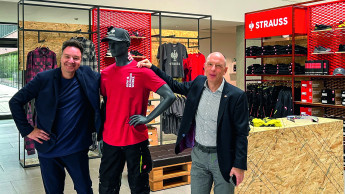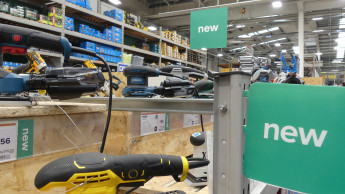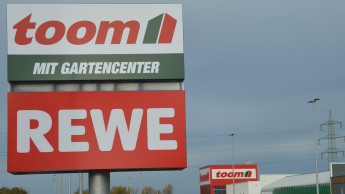Today's consumers are finding shopping increasingly complex, and consequently more difficult. Clever retailers are helping customers find their way more quickly and easily
So how can a retailer be sure that his or her store simplifies life - and decision-making - for these time-pressed consumers? That, according to several speakers at this year’s In-Store Marketing Institute’s annual conference in Chicago, is retailing’s most important challenge.
Retailers must begin to better understand why today’s customers buy, what they buy and especially where they buy. One of the unique things about shoppers is that they tend to buy certain items in certain types of stores, even though those products may be available in many different outlets.
It is retailing’s challenge to speed up the in-store decision-making process, to help consumers make the right buying decision, and to provide the decision-making information they need, whether it is simply a product decision or a project-oriented decision.
Consumer research experts today classify consumers into several categories:
The consumer who comes into a store knowing what is wanted, buys it and gets out. This person generally knows the brand wanted.
The shopper heavily influenced by the environment and the service.
This person probably knows the brand, but explores options in items and/or brands.
The browser buyer, a shopper who is comfortable with the store and will take some extra time to look around after finding what he or she wanted. This person will examine adjacencies, tie-in products, etc.
The “deal shopper”, who sniffs out bargains in-store and uses coupons and store advertising for bargains.
The retailer’s challenge is to encourage them all to be browsers, who enjoy a visit to the store, who do not consider it a challenge or a chore. In other words, one must create a “relationship” between the store and the shopper.
When a retailer considers the complexity of shopping today, as consumers see it, they will be better prepared to realign their thinking, their store layout, their signing, their point-of-purchase displays, their very assortments, in order to make the shopping experience faster and more fascinating - even fun – for consumers.
Consider the following, for example:
The average household receives more than 20 catalogues/brochures a month by mail.
In the supermarket alone, there are 20 000 new products introduced annually.
A typical supermarket stocks more than 30 000 items; a hardware store has some 20 000, and large home centres 30 000 or more.
How can a retailer call attention to new products without further confusing the public?Researchers contend that this abundance of choice can actually drive purchasers away. Studies show that when faced with too many choices, fewer purchases were made in some supermarkets compared to when a smaller assortment was offered. Consumers seem confused with too much choice and the decision they often make is not to buy at all. With the narrower choice, more sales were made.
Could the same be true in your store?
When a retailer offers choices - by brand, by colour, by price-point – he or she needs to help the purchaser navigate a category and so come to a decision quickly and confidently. Easy to say, but certainly not always done on the sales floor. And the addition of private labels offered by retailers and/or wholesalers increases the decision-making complexity for consumers.
A number of research studies prove that consumers are looking for “a satisfying shopping experience.” They want products to be easily found, a store to have knowledgeable employees, proper signing and in-store guidance, and self-checkouts to speed their departure. That should be a retailer’s goal.
In short, retailing’s challenge today is to simplify the consumer’s decision-making process, to seed ideas and to offer solutions to problems confronting the consumer in such a way as to stimulate buying action. It is important to understand these motivations when they are shopping your store or product category.

 Menü
Menü















